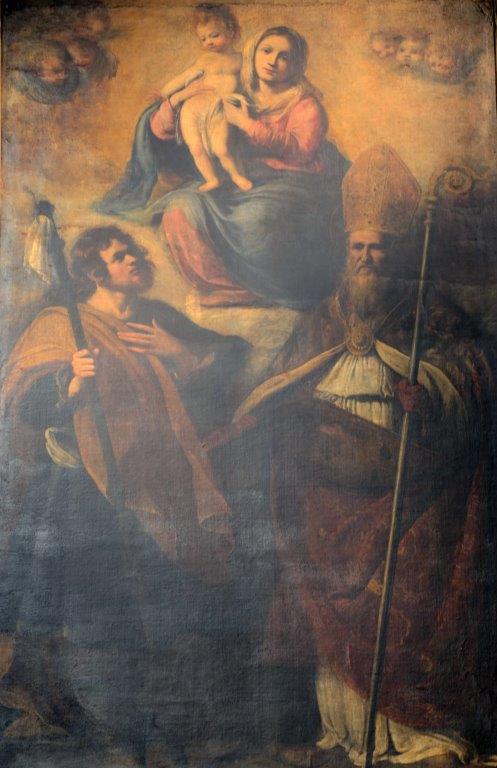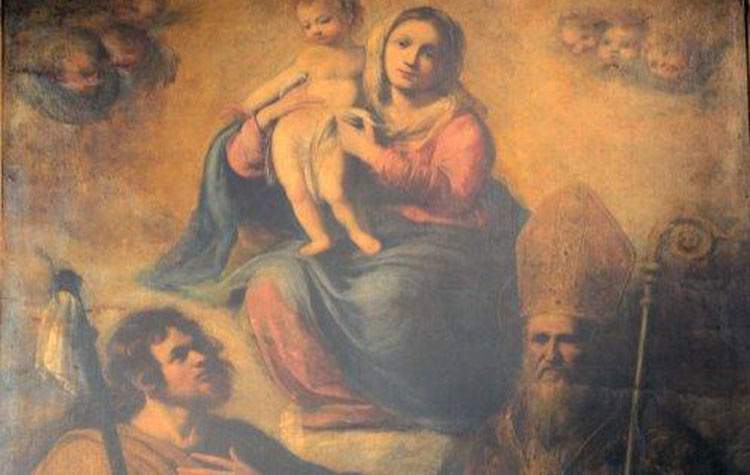The voyage of the Blessed Virgin Mary and Child with Saints Rocco and Severino, a 1616 work by Cristoforo Roncalli known as il Pomarancio (Pomarance, 1552 - Rome, 1626) formerly kept in the church of San Rocco in San Severino Marche, and currently kept instead in the church of Santo Stefano in Osnago, a village in the province of Lecco, not far from Monza, Italy, began in the past few hours. The trip is to bring the work back to San Severino Marche, where it had been until 1811, when the church of San Rocco was despoiled during Napoleonic requisitions: on June 27 of that year the altarpiece reached Macerata, a city where works from the Marche Apennines were collected while waiting to be sorted, and then on October 3 it arrived at the Brera Art Gallery. The painting then reached the parish of Osnago at an unspecified date: the figure of St. Severinus, in fact, had been misidentified as St. Blaise, a saint much venerated in the Lecco area.
The painting will, meanwhile, undergo restoration, which will be carried out by Luigi Parma ’s studio in Milan: the work was therefore properly packed and left Osnago in the snow to reach the Lombard capital. Once the operations are finished, the Municipality of San Severino Marche intends to bring it back to the region: since 2001 the Archdiocese of Camerino and San Severino Marche, in collaboration with the Municipality, have been dialoguing with the Pinacoteca di Brera (formally the owner of the painting) and with the superintendencies to obtain the deposit of the altarpiece, so that it can be exhibited again in the church of San Rocco, that is, the temple where it was originally located. This is where the painting’s original frame is still located, which has therefore been waiting for it for more than two hundred years, and which will be restored in the same way as the canvas.
 |
| Cristoforo Roncalli known as il Pomarancio, Blessed Virgin Mary with Child and Saints Rocco and Severino (1616; oil on canvas, 253 x 159 cm; Osnago, Church of Santo Stefano, on loan from Brera Art Gallery) |
The dialogue has matured and, for Brera and the Urbino Superintendency, there are no technical problems, so the transfer can take place (one of the conditions, moreover, was the restoration work, which will begin soon). However, there are still two obstacles to overcome: the first lies in the fact that the transfer is conditional on the placement, in the church of Santo Stefano in Osnago, of a replacement work, and the second is the cost of the operation. The Municipality of San Severino Marche estimates that the transfer will cost about twenty thousand euros: five thousand have already been allocated, but the municipal administration is also committed to finding the remaining sum. For this reason it has launched a fundraising campaign in order to find entities, associations and private individuals interested in offering their contribution to bring the Pomerancio canvas home. A subscription with which, therefore, the municipality hopes to initiate the transfer.
“Having a Pomarancio back in the city,” said Vanna Bianconi, alderman for Culture of the Municipality of San Severino Marche, “would mean expanding the museum and exhibition offerings by allowing the creation of a single visit itinerary including the Pinacoteca Civica, which preserves works from the 17th century, with dedicated rooms on the first floor, and the Pomarancio work, created between 1616 and 1617, in the church of San Rocco, which would become a fundamental stop for tourists and art lovers.”
 |
| Marche, Pomarancio altarpiece requisitioned by Napoleon returns to its church after 220 years |
Warning: the translation into English of the original Italian article was created using automatic tools. We undertake to review all articles, but we do not guarantee the total absence of inaccuracies in the translation due to the program. You can find the original by clicking on the ITA button. If you find any mistake,please contact us.